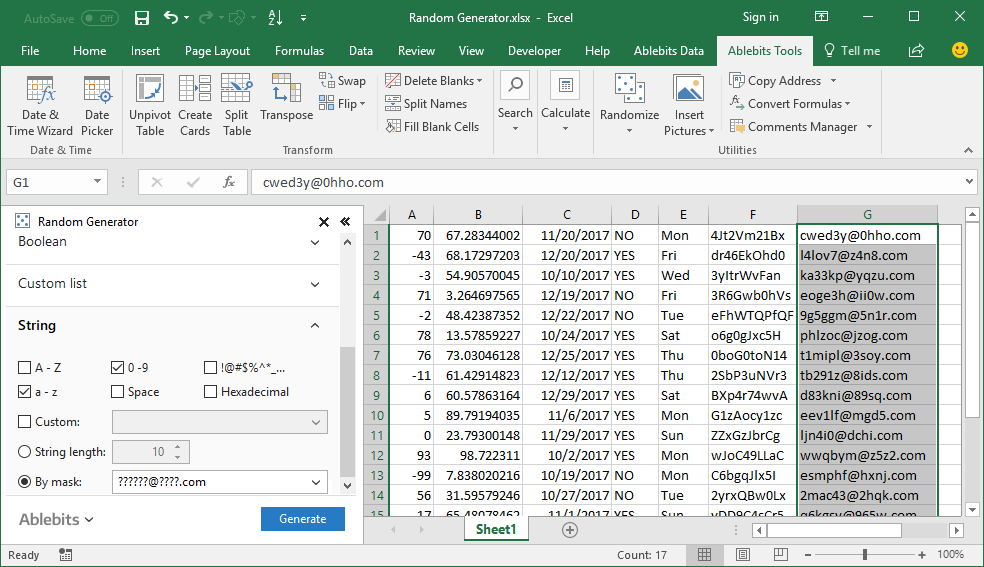
If the sum is 7 or 11 on the first roll, the player wins. After the dice have come to rest, the sum of the spots on the two upward faces is calculated. These faces contain 1, 2, 3, 4, 5 and 6 spots. One of the most popular games of chance is a dice game known as “craps,” the rules are as follows. # 6.8 Case Study: Game of Chance Introducing enum `number = shiftingValue + rand() % scalingFactor ` # Generalized Scaling and Shifting of Random Numbers This value is converted to an unsigned integer and used as the seed to the random number generator. * Function `time` (with the argument 0 as written in the preceding statement) typically returns the current time as the number of seconds since January 1, 1970, at midnight Greenwich Mean Time (GMT). This causes the computer to read its clock to obtain the value for the seed. To randomize without having to enter a seed each time, we may use a statement like The function prototype for the srand function is in header``. Function `srand` takes an **unsigned int** value as an argument. A **four-byte unsigned int** can have only nonnegative values in the range 0– 4294967295. * A variable of type **unsigned int** is also stored in at least two bytes of memory.A **two-byte unsigned int** can have only nonnegative values in the range 0–65535. * An **int** is stored in at least two bytes of memory (typically four bytes on 32-bit systems and as much as eight bytes on 64-bit systems) and can have positive and negative values. The program uses the data type **unsigned**, which is short for **unsigned int**. Each integer in the range 1 to 6 should appear approximately 1,000,000 times. To show that the numbers produced by `rand` occur with approximately equal likelihood, Fig. # Rolling a Six-Sided Die 6,000,000 Times We then shift the range of numbers produced by adding 1 to our previous result. The number 6 is called the **scaling factor**. To produce integers in the range 0 to 5, we use the modulus operator (%) with rand as follows:

The function prototype for the rand function is in. If rand truly produces integers at random, every number between 0 and RAND_MAX has an equal chance (or probability) of being chosen each time rand is called. display a report based on the grades entered by userĬout header). MaximumValue = z // make z the new maximumValue determine whether z is greater than maximumValue MaximumValue = y // make y the new maximumValue determine whether y is greater than maximumValue Int maximumValue = x // assume x is the largest to start Int GradeBook::maximum( int x, int y, int z ) returns the maximum of its three integer parameters MaximumGrade = maximum( grade1, grade2, grade3 ) If ( name.length() > grade1 > grade2 > grade3 Void GradeBook::setCourseName( string name ) function to set the course name limits name to 25 or fewer characters MaximumGrade = 0 // this value will be replaced by the maximum grade SetCourseName( name ) // validate and store courseName

constructor initializes courseName with string supplied as argument

#include "GradeBook.h" // include definition of class GradeBook Int maximumGrade // maximum of three grades String courseName // course name for this GradeBook Int maximum( int, int, int ) // determine max of 3 values Void displayGradeReport() // display a report based on the grades Void inputGrades() // input three grades from user Void displayMessage() // display a welcome message String getCourseName() // function to retrieve the course name Void setCourseName( string ) // function to set the course name GradeBook( string ) // constructor initializes course name ```cpp= // Member functions are defined in GradeBook.cpp Definition of class GradeBook that finds the maximum of three grades # 6.4 Function Definitions with Multiple Parameters all functions in the `` header are global functions * the function prototypes for global functions are placed in headers, so that the global functions can be reused in any program that includes the header and that can link to the function’s object code

* A boss (similar to the calling function) asks a worker (similar to the called function) to perform a task and report back (i.e., return) the results after completing the task. * purpose $\rightarrow$ modularize a program * construct a large program from **small, simple piecies, or components** to develop and maintain it.


 0 kommentar(er)
0 kommentar(er)
